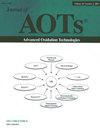Degradation of methyl orange using dielectric barrier discharge water falling film reactor
Q Chemistry
引用次数: 22
Abstract
Abstract The dielectric barrier discharge (DBD) technique based cylindrical water falling film reactor was used for degrading an azo dye methyl orange (MO). The primary conditions affecting the degradation of methyl orange were systematically investigated. After 30 min plasma treatment, the degradation rate of MO was as high as 93.7% with gas velocity of 300 mL/min and the input energy of 72.5W. The influences of initial pH and conductivity of MO solution were also explored. The results indicated that the optimum pH value was 3.02 and 99.1% removal of MO was achieved within 30 min. Three catalytic systems DBD/Fe2+, DBD/PS (persulfate) and DBD/Fe2+/PS were examined to improve the degradation rate and the chemical oxygen demand (COD) removal rate of MO. The highest degradation rate (100%) and COD removal rate (72.4%) happened in DBD/Fe2+/PS system. The degradation products were analyzed by LC-MS in DBD system and DBD/Fe2+/PS system respectively, and then the possible degradation pathways of MO were proposed.介质阻挡放电降膜反应器降解甲基橙
摘要采用介电阻挡放电(DBD)技术的圆柱形降膜反应器降解偶氮染料甲基橙(MO)。对影响甲基橙降解的主要条件进行了系统研究。等离子体处理30min后,当气速为300 mL/min,输入能量为72.5W时,MO的降解率高达93.7%。探讨了MO溶液初始pH值和电导率的影响。结果表明,最佳pH值为3.02,在30 min内可达到99.1%的MO去除率。考察了DBD/Fe2+、DBD/PS(过硫酸盐)和DBD/Fe2+/PS三种催化体系对MO的降解率和化学需氧量(COD)去除率的影响,其中DBD/Fe2+/PS体系的降解率最高(100%),COD去除率最高(72.4%)。采用LC-MS分别对DBD体系和DBD/Fe2+/PS体系中的降解产物进行了分析,提出了MO可能的降解途径。
本文章由计算机程序翻译,如有差异,请以英文原文为准。
求助全文
约1分钟内获得全文
求助全文
来源期刊
CiteScore
0.88
自引率
0.00%
发文量
0
审稿时长
1 months
期刊介绍:
The Journal of advanced oxidation technologies (AOTs) has been providing an international forum that accepts papers describing basic research and practical applications of these technologies. The Journal has been publishing articles in the form of critical reviews and research papers focused on the science and engineering of AOTs for water, air and soil treatment. Due to the enormous progress in the applications of various chemical and bio-oxidation and reduction processes, the scope of the Journal is now expanded to include submission in these areas so that high quality submission from industry would also be considered for publication. Specifically, the Journal is soliciting submission in the following areas (alphabetical order): -Advanced Oxidation Nanotechnologies -Bio-Oxidation and Reduction Processes -Catalytic Oxidation -Chemical Oxidation and Reduction Processes -Electrochemical Oxidation -Electrohydraulic Discharge, Cavitation & Sonolysis -Electron Beam & Gamma Irradiation -New Photocatalytic Materials and processes -Non-Thermal Plasma -Ozone-based AOTs -Photochemical Degradation Processes -Sub- and Supercritical Water Oxidation -TiO2 Photocatalytic Redox Processes -UV- and Solar Light-based AOTs -Water-Energy (and Food) Nexus of AOTs

 求助内容:
求助内容: 应助结果提醒方式:
应助结果提醒方式:


